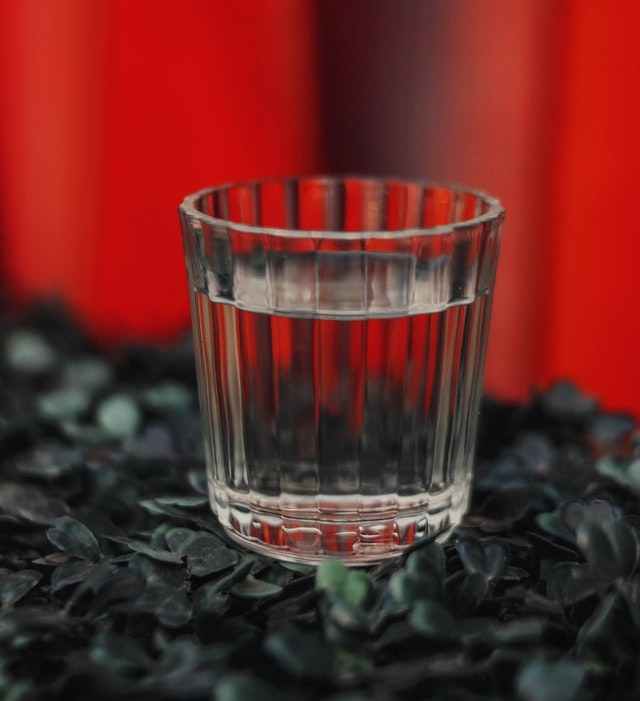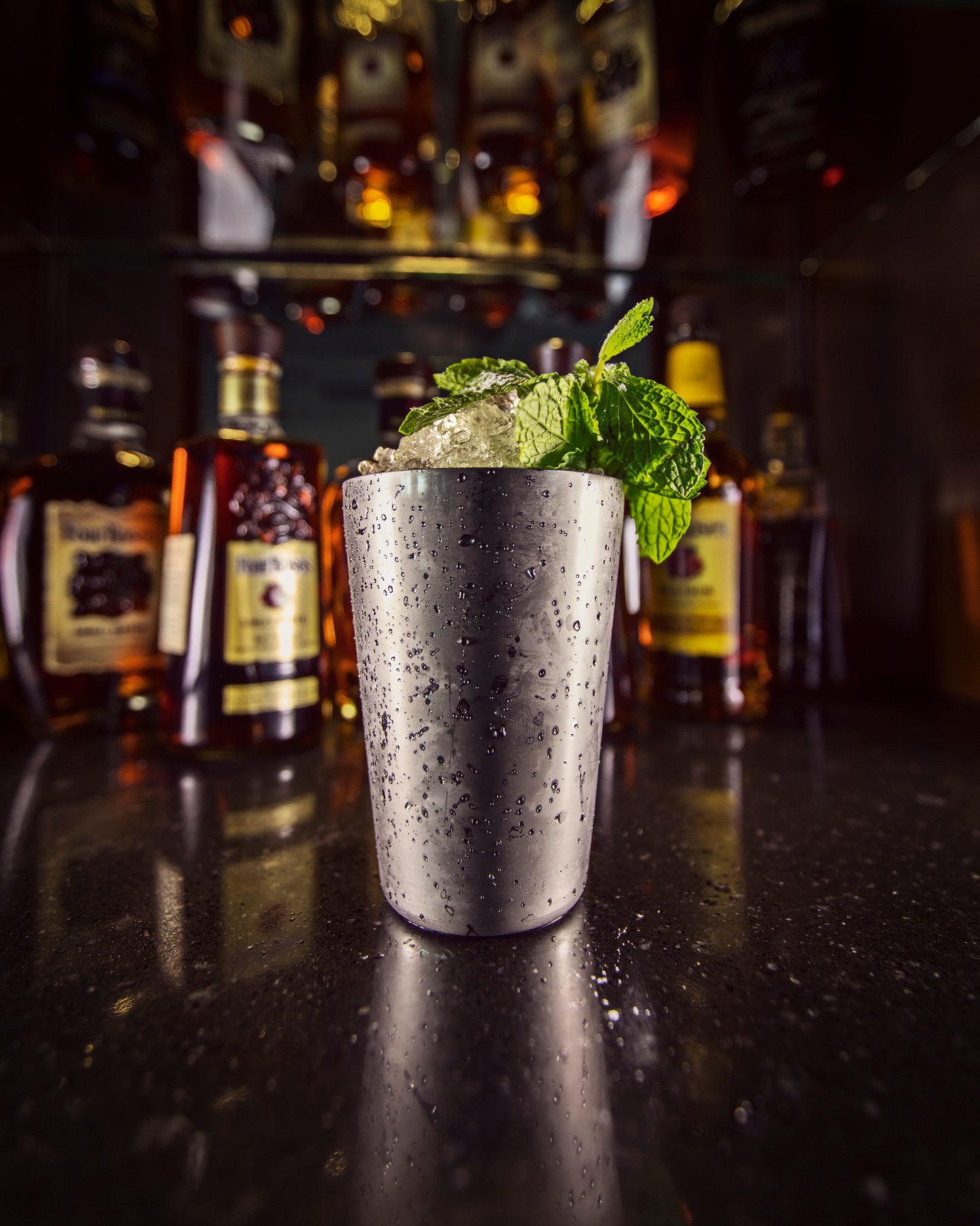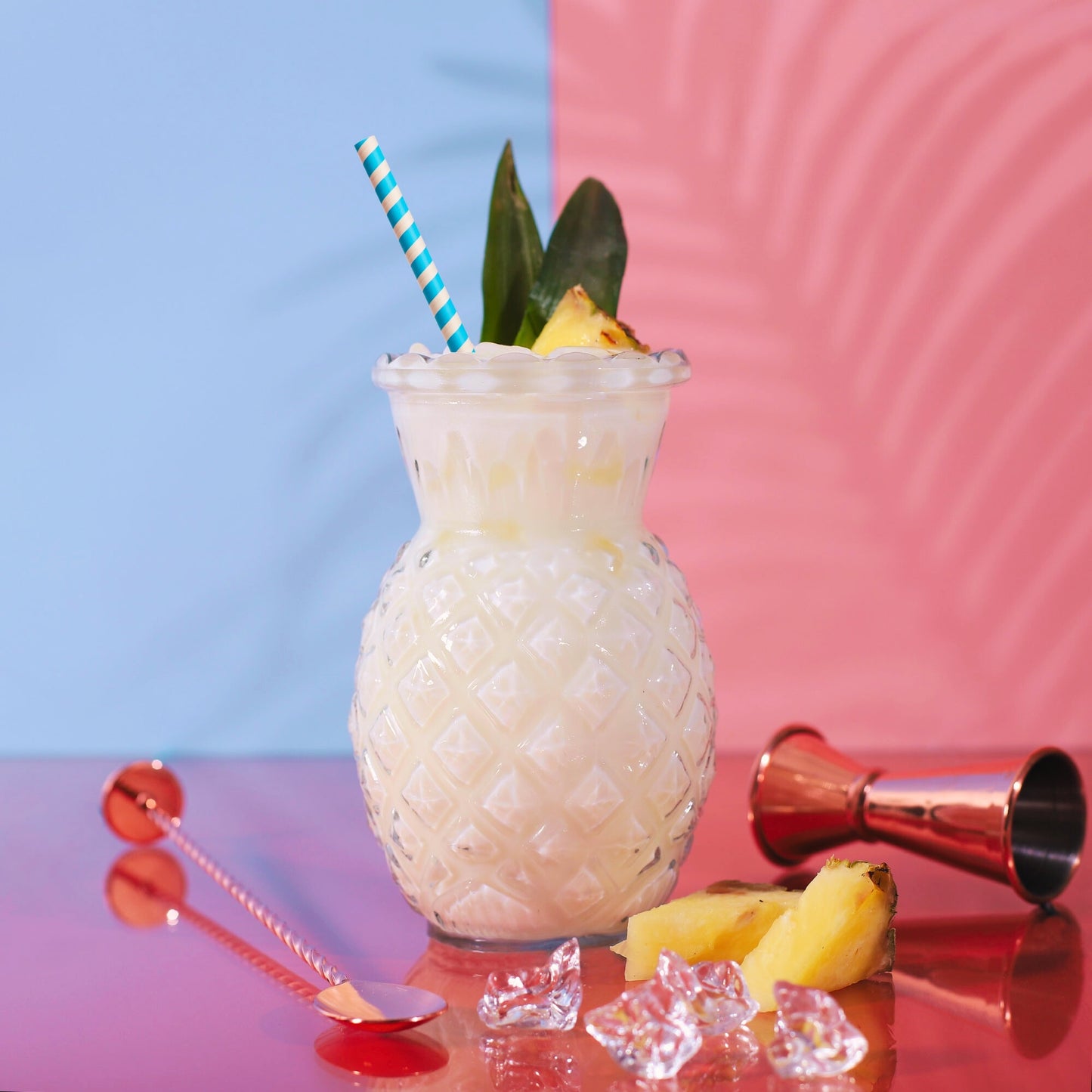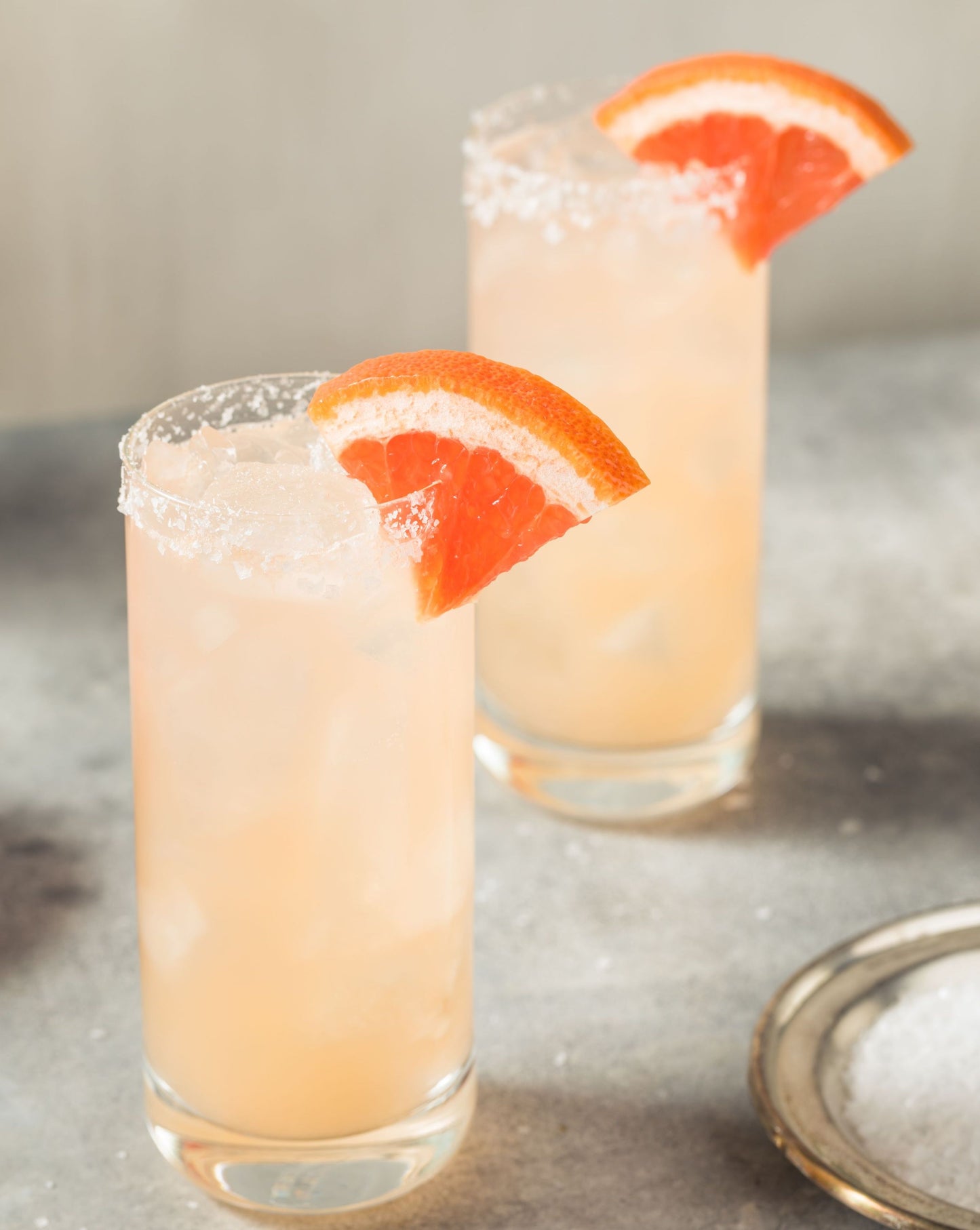

What’s the Point of Putting Ice in My Drink?
Beyond its obvious function to keep your cocktail chilled, ice plays a vital role in controlling dilution, texture and flavour. Let’s put it this way - did you know that diluted ice is often an intentional 15-20% of your final cocktail? This dilution mellows alcohol burn and marries the drink's flavours to create a smoother and more enjoyable cocktail.
Drinks Distilled Spirits Guide and bartender Jake O’Brien Murphy explains: “Bartenders consider ice itself to be an ingredient, so the importance of the cold stuff can’t be overstated. Everything is contingent on ice; when we shake with ice, we create dilution, change temperature, and modify texture.”
Let's dive in and explore how to use ice in your spirits and cocktails.

1. Always Experiment With Sipping the Spirit Neat, or by Adding a Splash of Water
It’s important to know when you’re going to benefit from ice and when you aren’t. For example, if you’re keen on exploring the flavour profile of an exciting new spirit, we advise you to host a mini-tasting session first.
You can explore a spirit by sipping it neat or with a few drops of water (adjusted to your taste), before adding ice and creating cocktails.
A few drops of water can open up additional flavours without reducing the temperature or strength of flavour in your spirit. With higher ABV (alcohol by volume) cask strength whiskies, for example, the alcohol burn can overwhelm your palate and conceal the more evident flavours in the whisky. Adding water will slightly dilute and ‘open up’ the spirit, helping you to unlock additional flavours and aromas.
Here are a few examples from our Spirits Guides
It all comes down to personal preference but it can also depend on the spirit you're tasting.

2. Know What Size and Style to Use
Once you’ve tried the spirit neat or with water, it’s time to think about how to use ice for a great cocktail.
Emily Chipperfield comments: “Contrary to popular belief, more ice will keep your drink at the perfect temperature, without over diluting the flavours. If you think there’s too much ice, you’re probably still not using enough ice. Just remember, the more ice you use, the slower the ice will dilute. When making cocktails, make sure none of your wider ingredients are above room temperature to maintain the cocktail’s temperature - chilled is best if you’ve got time to pre-plan.”
The importance of ice can vary depending on the style of cocktail. Here's how...

Large Ice Cubes and Stirred Cocktails
Robyn Evans explains: “It’s important there’s lots of ice in the mixing glass or shaker when you make short cocktails that are stirred or shaken but not served with ice (such as the Manhattan) so that your cocktail doesn’t dilute too quickly and stays cold. Short cocktails served with ice are best enjoyed extra cold to maintain that crisp freshness. The dilution and aeration from shaking with ice are also important to balance the ingredients, such as lime and agave syrup in a Tommy’s Margarita.”
Large ice cubes are good for shorter drinks because they melt slowly and dilute the drink less.
As Spirits Guide Jason-Candid Knusel puts it: “This will chill it, but not kill it”.
This is important for stirred drinks because they are typically made with delicate ingredients that can be easily diluted and have their flavour notes impaired.

Smaller Ice Cubes and Longer and Shaken Cocktails
Small ice cubes are good for shaken drinks because they help to aerate the drink in a way that large ice cubes can’t during the shaking process. This is important for shaken drinks where you want to create a smooth and frothy texture. Small ice cubes also melt more quickly than large ice cubes, which helps to chill the drink faster.
The amount and type of ice used in a long cocktail will vary depending on the cocktail. For example, large ice cubes are unlikely to fit in a Highball glass, which is why bartenders will load Highball cocktails with smaller ice cubes instead.
Jake O’Brien Murphy explains: “When we make long cocktails like a Highball, we use the ice as the foundational aspect by which the drink can stay as cold as possible, for as long as possible but even more importantly, as an anchor that those beautiful, ripping bubbles can nucleate steadily.”
Emma Stokes advises: “Add as much good quality ice as you can fit in the glass, floating ice is the enemy of the Highball!”

Crushed Ice and Longer Cocktails
Meanwhile, the chilling and dilution provided by crushed ice in a Mojito or Julep goes hand in hand with their role as a refreshing drink for hot summer days as it cools cocktails down quicker (thanks to this style of ice having more surface area in contact with the liquid) and is easier to use in blended cocktails. However, it is important to use crushed ice sparingly, as it can quickly dilute a cocktail and ruin its flavour.
Top tip: For best results, fill your mixing glass or shaker two-thirds full, which is roughly one cup or five to six standard ice cubes.

3. Invest Time in Creating Good-Quality Ice
Jake O’Brien Murphy explains: “If you’re going to mix drinks at home, you want the highest quality ice you can make or buy. Uniform, square or slightly rectangular with as few air bubbles or defects as possible.”
Air bubbles and general defects in ice should be avoided because of their negative impacts on three important aspects of any good cocktail:
- Flavour: Trapped air in an ice cube will eventually be released, adding unwanted flavours likely picked up from your home freezer.
- Texture: Air bubbles in ice contribute to faster dilution, meaning your cocktail can become more watery more quickly. If you’re making a fizzy cocktail, you’ll also experience extra fizz as the various gases meet and interact.
- Appearance: Let’s face it, cloudy ice just doesn’t look as good!
You can eliminate air bubbles in your ice at home by using filtered or distilled water. Alternatively, boil the water before freezing it as hot water takes a longer time to freeze.

4. Take Care in Storing Your Ice
Cressida Lawlor advises: “If you can, it’s best to keep a dedicated ice drawer in your freezer, as this can often make a real difference in terms of minimising spillages and therefore maximising the size and quality of your ice.”
Overall, your choice of ice tray is unlikely to have much of an effect on storage. It’s worth noting that plastic trays can sometimes warp or crack over time. You won’t get this with rubber, silicone and metal trays.
Here are some additional factors to consider when storing your ice:
- Use an airtight container: This will prevent the ice from absorbing odours, like the freezer tang we mentioned earlier!
- Don’t overfill the tray: This can cause the ice to crack and lead to the formation of those pesky air bubbles.
- Keep freezing: Continue for at least 24 hours for ice that’s as clear and hard as possible.

5. Pre-Batching as an Alternative to Ice
Jake O’Brien Murphy points out: “Usually, I’ll forgo ice altogether with a gimlet and pre-batch my drink for ease. A pre-diluted batched gimlet spending a few hours in the freezer will take on velvety consistency that can’t be achieved otherwise. I leave it to chill for around an hour before serving it into a frosted glass and garnishing by expressing lime oils across to the top to finish.”
Depending on the cocktail, pre-batching and storing cocktails in the freezer can sometimes be more effective than using fresh ice. Stirred drinks with a high alcohol content tend to taste better from the freezer than drinks made with mixers that can break down or turn into a slushy-style texture.
For more specific advice tailored to your chosen spirit - don’t forget, every single one of our bottles comes with a recommended serve and advice on how ice should be used to complement them.
Cocktail Recipes
Putting Ice to Work
Directly translating from Spanish as 'strained pineapple', the origin story of Puerto Rico's national drink since 1978 is contested by a trio of bartenders.
The Paloma (Spanish for ‘dove’) is the national cocktail of Mexico and has recently risen to be one of the most popular tequila cocktails, thanks to the ease with which it can be created and its refreshing flavour profile.






